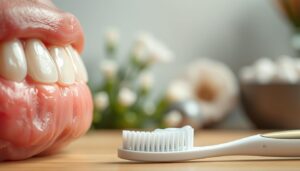Healthy gums are the foundation of a beautiful smile and overall oral health. Often overlooked, the condition of your gums can be a key indicator of your general well-being. Gums play a critical role in supporting teeth, protecting the roots, and forming a barrier against harmful bacteria. Ignoring their health can lead to gum disease, which, if left untreated, may result in tooth loss and even contribute to systemic issues like heart disease or diabetes.
Understanding what healthy gums look like is an essential first step in maintaining oral health. When your gums are in good condition, they are typically firm, pink, and fit snugly around your teeth. Any deviation from this norm could be an early warning sign of underlying issues. Recognizing these signs early allows you to address problems before they escalate, potentially saving you from costly and painful dental procedures.
In this guide, we’ll explore how to identify healthy gums through visual and physical indicators, explain the factors that influence gum health, and provide actionable tips to keep your gums in excellent condition. Whether you’re aiming to maintain your current oral health or detect early signs of trouble, this comprehensive guide is here to help you care for your smile with confidence.
Moreover, healthy gums can significantly impact your self-esteem and confidence. Gums that are free of infection and inflammation help create a clean, smooth smile that enhances your appearance. On the other hand, unhealthy gums can cause noticeable discomfort, bad breath, and an unattractive smile. Taking care of your gums, therefore, not only improves your overall health but also positively affects your social and professional interactions.
This guide will equip you with the knowledge you need to identify healthy gums and recognize when they may need attention. By educating yourself on the signs of gum disease, the best practices for oral hygiene, and how lifestyle factors like diet and smoking affect your gums, you’ll be empowered to take control of your oral health. Whether you’re already in good oral health or aiming to improve it, understanding the role of healthy gums is the first step in preserving both your smile and your general well-being.
What Are Healthy Gums?
Healthy gums are the soft tissues that surround and protect the teeth, forming a seal that shields the roots from harmful bacteria. They also provide structural support, keeping teeth firmly in place. Healthy gums are more than just an aesthetic feature; they are a critical component of overall oral health. Properly functioning gums prevent infections, reduce inflammation in the mouth, and help maintain the stability of the teeth. Without healthy gums, even the strongest teeth can become compromised.
Visual Characteristics of Healthy Gums
Recognizing healthy gums is easier when you know what to look for. They typically exhibit the following features:
- Color: Healthy gums are generally a light pink, though the shade may vary slightly depending on your natural skin tone.
- Texture: The surface of healthy gums should be firm and stippled, resembling the texture of an orange peel.
- Shape: They should contour neatly around each tooth, forming a tight seal without gaps or swelling.
- No Bleeding: Gums that do not bleed during brushing or flossing are usually healthy.
Any deviation from these characteristics—such as redness, puffiness, or bleeding—may indicate underlying gum issues that need attention.
Habits That Promote Gum Health
Maintaining healthy gums requires consistent care. Here are key habits to incorporate into your daily routine:
- Proper Oral Hygiene: Brush your teeth twice a day with fluoride toothpaste and floss daily to remove plaque buildup along the gumline.
- Balanced Diet: A diet rich in fruits, vegetables, and whole grains provides essential nutrients for gum health, while minimizing sugar intake helps prevent plaque formation.
- Hydration: Drinking water helps wash away food particles and bacteria that can irritate gums.
- Regular Dental Visits: Professional cleanings and check-ups every six months are essential for preventing gum disease and catching issues early.
Signs of Problems: How to Differentiate Healthy from Unhealthy Gums
Early detection of gum problems can prevent serious oral health issues. Watch out for these signs of unhealthy gums:
- Redness or Swelling: Gums that appear inflamed are often a sign of irritation or infection.
- Bleeding: Bleeding while brushing or flossing is an early symptom of gum disease.
- Recession: Gums that pull away from the teeth, exposing the roots, may indicate advanced gum disease.
- Persistent Bad Breath: Chronic bad breath or a bad taste in the mouth can result from gum infections.
If you notice any of these symptoms, it’s crucial to consult a dentist as soon as possible to address the issue.
The Role of Dentists in Gum Health
Dentists are your allies in maintaining gum health. Regular dental check-ups help identify and treat problems early. During these visits, dentists remove plaque and tartar that cannot be eliminated by brushing alone, preventing gum inflammation and disease. Additionally, they can provide personalized advice on improving your oral hygiene routine to better care for your gums.
Tips for Maintaining Healthy Gums Over Time
Consistency is key to long-term gum health. Here are some practical tips to ensure your gums stay healthy:
- Use the Right Tools: Invest in a soft-bristled toothbrush and consider using an electric toothbrush for better plaque removal.
- Fluoride Mouthwash: Rinse daily with a fluoride-based mouthwash to reduce bacteria and strengthen your gums.
- Avoid Tobacco: Smoking and chewing tobacco are major contributors to gum disease.
- Stress Management: High stress levels can weaken your immune system, making your gums more susceptible to disease.
- Stay Informed: Educate yourself about gum health and remain vigilant for changes in your gums’ appearance or feel.
By following these steps, you can protect your gums and enjoy a healthier, more confident smile.
Caring for Your Smile—Why Healthy Gums Matter
Healthy gums are the cornerstone of a radiant smile and the key to overall oral health. Often underestimated, gums provide critical support for teeth, shield against harmful bacteria, and contribute to maintaining a balanced and healthy mouth. By recognizing what healthy gums look like and understanding how to care for them, you can prevent issues like gum disease, tooth loss, and other oral health complications.
The benefits of healthy gums extend beyond the mouth. Research shows that gum health is closely linked to overall health, with poor gum care being associated with systemic conditions such as cardiovascular disease and diabetes. Keeping your gums healthy not only protects your teeth but also contributes to a healthier body and a better quality of life.
By adopting good oral hygiene practices, visiting your dentist regularly, and staying vigilant for any changes in your gums, you are taking proactive steps to safeguard your smile. Small daily habits, such as brushing and flossing, paired with professional guidance, can make a significant difference in maintaining gum health.
Remember, a beautiful smile starts with healthy gums. Make them a priority, and they will reward you with confidence, comfort, and lasting oral health.
Taking care of your gums is an investment in your long-term well-being. It’s important to remember that gum health is not just about appearance; it plays a crucial role in preventing more serious health problems. Regular dental check-ups and cleanings help detect early signs of gum disease, allowing for timely intervention before issues become more severe. In addition, adopting a balanced diet rich in nutrients that promote gum health, such as vitamin C and calcium, can further enhance your efforts to maintain strong, healthy gums.
While genetics can influence your susceptibility to gum problems, lifestyle choices such as smoking and poor diet can increase the risk of gum disease. Therefore, being mindful of these factors and making positive changes can have a profound impact on the health of your gums. Even if you’ve neglected your gum care in the past, it’s never too late to start taking better care of them.
In conclusion, healthy gums are fundamental to your overall health and well-being. By staying informed and proactive about gum care, you can ensure that your gums remain strong, your smile stays radiant, and you enjoy a lifetime of good oral health. Don’t wait for issues to arise—take action now and keep your gums in optimal condition for years to come.




